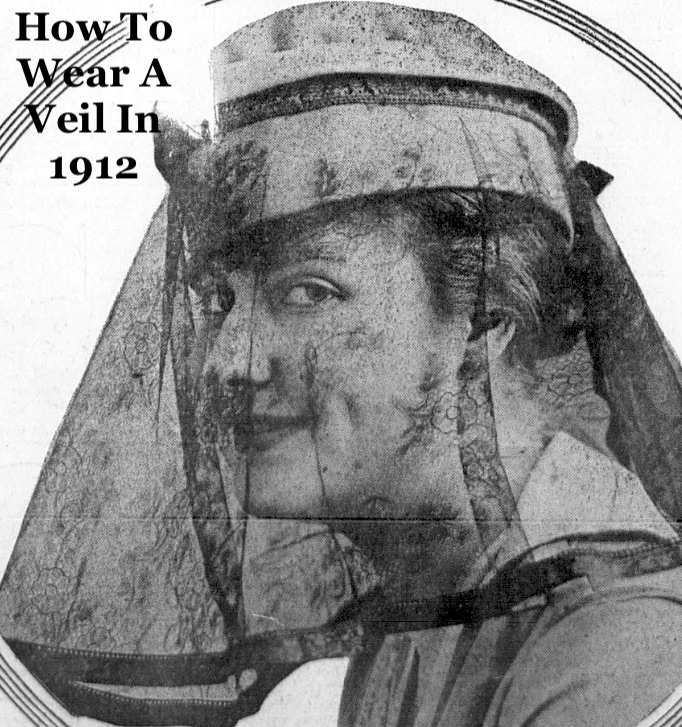
In 1912, there were fashion rules on what type of veil a person could wear. Black veils were a main staple, whereas only certain people could wear a navy or purple veil to their advantage.
The article below was originally printed in a newspaper in 1912.

The Veil as an Aid to Beauty
It is a long step from the veil of the orient which is used to hide the charms of the eastern woman to the veil as it is worn by the modern woman as a means of enhancing her beauty. For, although the first purpose of a veil is to protect the face, there are veils and veils, and a well chosen one adds the last touch to a smart costume, while an unbecoming one can make even a pretty girl appear homely.
In regard to the color of a veil, there are two points to be considered, the hat and the complexion. The latter, however, is the more important, and if a veil which matches the hat detracts from the face it must be sacrificed for the sake of becomingness.
One must have an exceeding clear, white skin to wear a blue or purple veil, and the brunette must also avoid pure white. The veil which is made of black and white threads interwoven is the most becoming to most faces, and a black veil of fine mesh is always safe. But be careful in buying a veil with a large, lacy pattern. If there is the least blemish on your complexion the pattern will show up rather than conceal it, and it is only a certain type of large, regular featured woman who can add to her looks by a veil of this kind.
Source: The Washington herald. (Washington, D.C.), 24 Nov. 1912.

